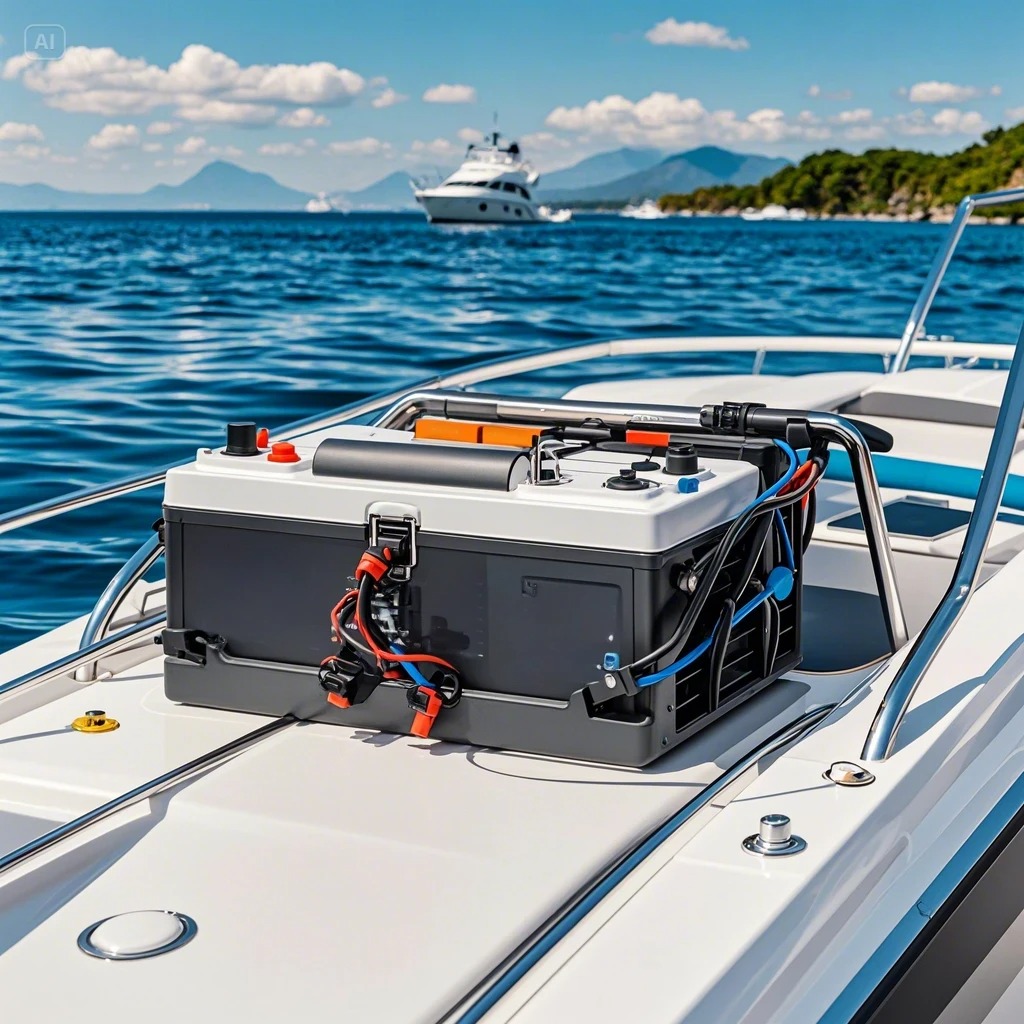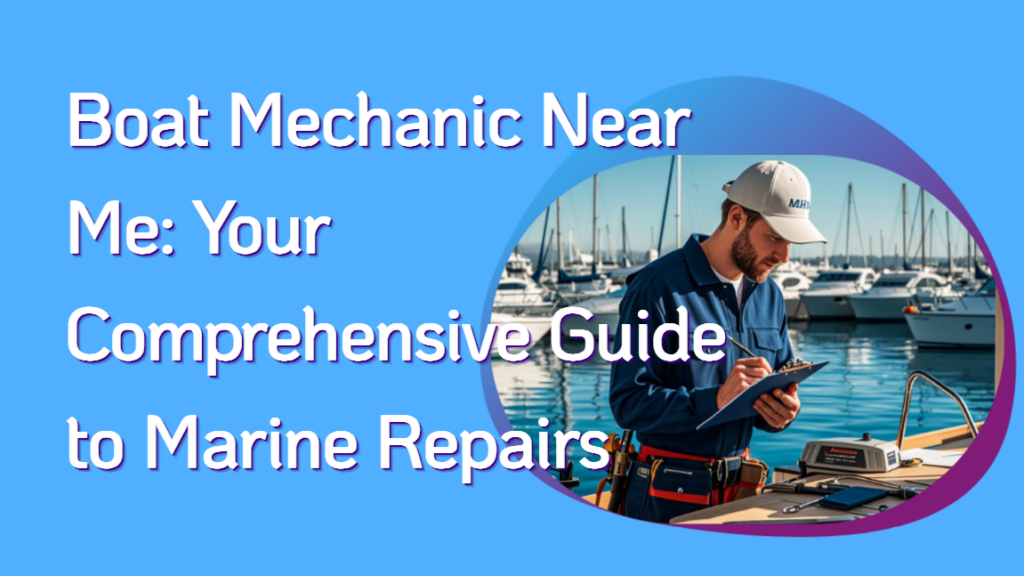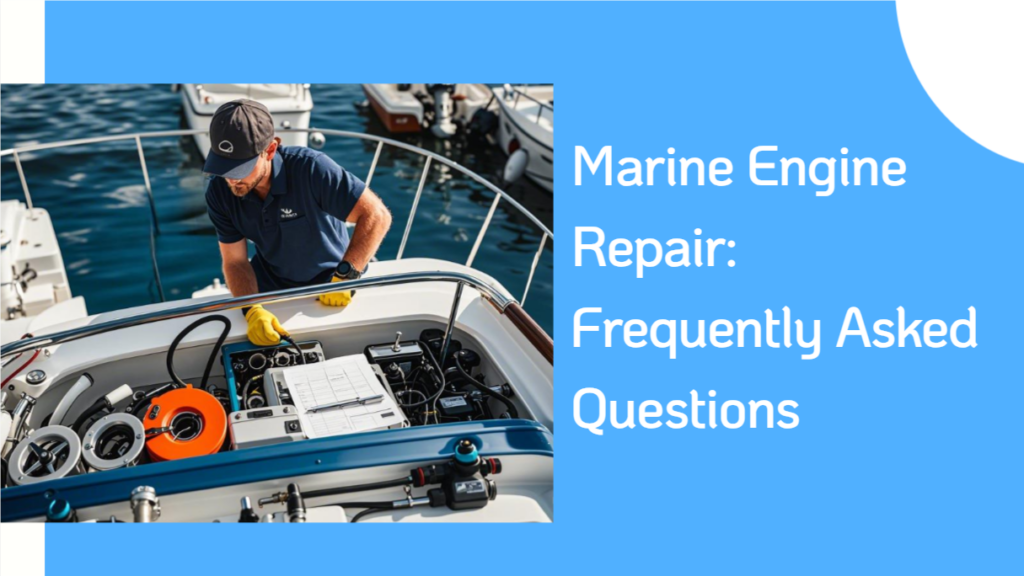Introduction: New Life for Your Dream Under Sail
Owning a boat requires keeping its critical systems—like marine batteries for navigation, lights, and trolling motors—in top shape. Battery Trays for Boats are essential for securing your marine battery, preventing damage to batteries, and maintaining order. This guide explores why Battery Trays for Boats matter, their types, how to choose one, and installation steps, ensuring your boat’s power stays reliable. Whether you’re outfitting a bass boat with Ionic lithium batteries or organizing a center console, you’ll find practical solutions here.
Why Secure Battery Storage Matters for Every Boater
A dependable mount is vital for battery maintenance and safety. A sturdy battery tray keeps your motor battery or trolling motor batteries stable in rough waters, reducing vibration wear. Battery Trays for Boats also trap battery acid leaks, protecting your boat’s battery housing. Without proper support, batteries can shift, damaging battery cells or connections, leading to costly repairs. For broader upkeep tips, see Maximize Performance: Expert Tips for Boat Maintenance Near Me. Battery Trays for Boats are a small investment for big protection, acting as battery bodyguards for your power source.
Protecting Your Investment: Preventing Damage and Leaks
The primary role of a Marine Battery Tray is to prevent your marine batteries from shifting, which can cause significant damage to batteries due to impacts or excessive vibration. Furthermore, a well-designed tray acts as a containment barrier for any potential battery acid leaks from traditional acid battery types, safeguarding your boat’s structure and wiring.
Ensuring Reliability: Stable Power for Navigation, Lights, and Trolling Motors
A secure battery setup ensures a consistent power supply. When your motor battery or trolling motor batteries are firmly held in place by a battery strap or the tray itself, you get reliable, long-lasting power, crucial for essential systems and preventing unexpected power loss, especially in rough conditions. This provides the usable power you need for every trip.
Maintaining Order: Keeping Your Boat’s Power System Tidy
Beyond safety, Battery Compartment Trays and other types of Battery Trays help maintain an organized power area. This neatness not only looks better but also makes battery maintenance easier and helps identify issues quickly. A tidy battery setup reduces the chances of accidental short circuits or damaged connections, ensuring your battery safe at all times.
Maximize Performance: Expert Tips for Boat Maintenance Near Me.
Understanding Battery Trays: More Than Just a Mount
A battery tray is a platform that holds your boat’s power source securely. Unlike an actual battery enclosure like a battery box, these mounts often use a battery strap or ratchet strap for an open, ventilated design. They’re ideal for a single battery setup or multi-battery configurations, keeping your Ionic lithium batteries or deep cycle battery steady. A battery shelf can complement this setup for added organization.
What is a Battery Tray? Open Design vs. Enclosures
A Marine Battery Tray is fundamentally an anti-vibration mount designed to hold a single battery or multiple battery packs in place. Its open design promotes ventilation, which is crucial for some battery types, especially during charging. This contrasts with a fully enclosed battery box, which offers more protection from the elements but can restrict airflow. The choice between a battery tray and a plastic battery box often depends on your normal battery location and the level of exposure.
Key Components: Trays, Straps, and Accessories
Most Battery Trays consist of a base and a securing mechanism, typically a battery strap. High-quality straps, like the MOE42217-10 BATTERY STRAP or SEA415082-1 BATTERY BOX STRAPS, ensure the battery safe and prevent movement. Some trays also include cushions batteries to further absorb vibrations and protect the battery bodyguards from wear.
Integrating with Your Boat’s Power System (e.g., for Lithium or Deep Cycle Batteries)
For a robust battery setup, especially with modern lithium battery technology like Ionic lithium batteries or Dakota Lithium Batteries, trays provide a stable foundation. Whether you have a single lithium battery or a bank of Deep Cycle batteries for deep cycle applications, the right tray ensures optimal performance and longevity.
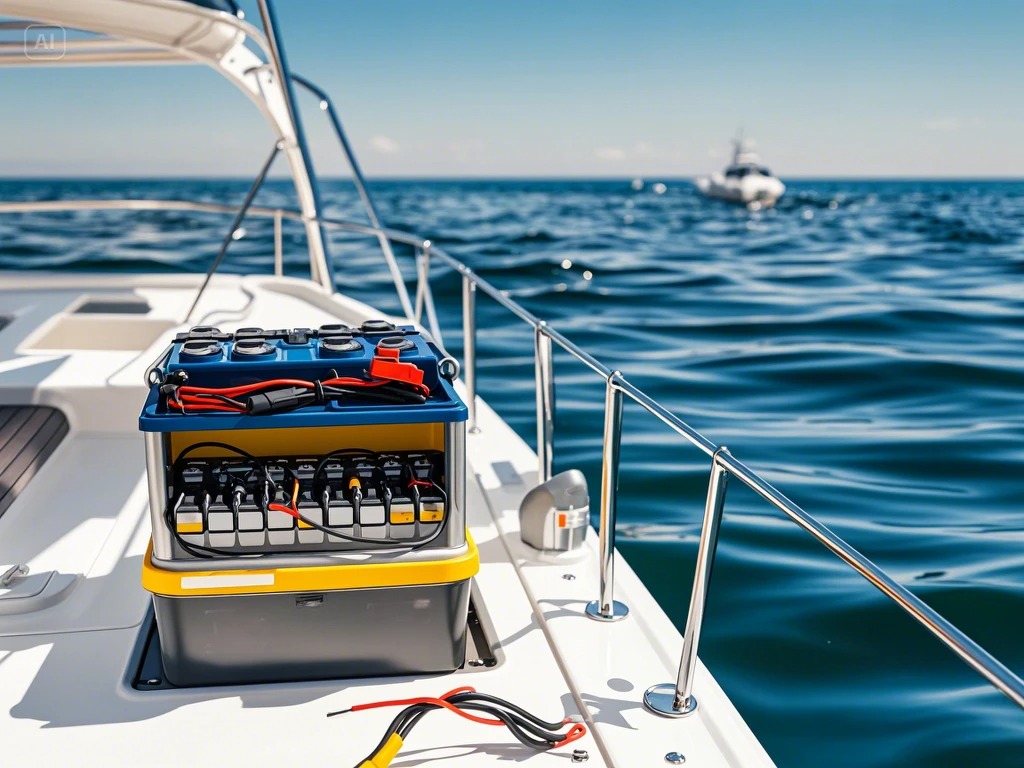
Types of Battery Trays: Choosing the Right Fit for Your Vessel
Your boat and power needs dictate the best option. Here’s a breakdown:
Aluminum Battery Trays: Lightweight, Durable, and Rust-Resistant (Ideal for Saltwater & Duck Boats)
Aluminum battery trays are a popular choice due to their light weight and excellent rust resistance, making them perfect for saltwater environments and duck boats. Secured often with stainless screws, they provide a sturdy battery tray solution. A custom aluminum battery tray, like those offered by WJR Inc. or Monster Marine Lithium, can be tailored for specific boat models, like a bass boat, providing a compartment for batteries with effective water drainage. These are ideal for high-performance units like Ionic lithium batteries or a powerful 320Ah battery.
Plastic Battery Trays: Affordable and Practical for Basic Needs
Plastic options are affordable and light, working well for previous boats or for basic needs where a sturdy battery tray made of metal might be overkill. However, be wary of cheap plastic battery trays as they might be less durable over time compared to their metal counterparts.
Custom Battery Trays & Compartment Solutions: Tailored for Bass Boats, Center Consoles, and Space Optimization
Battery Compartment Trays from brands like AMPD Marine (referred to as BBT Battery Trays) are specifically crafted to fit the year, make, and model of your bass boat or center console, optimizing the unused area around your normal battery location. These provide a dedicated battery compartment that maximizes space and organization. A custom aluminum battery tray can offer similar benefits.
Specialized Trays for Specific Battery Types (e.g., Ionic Lithium Batteries, Group 24/29/31)
Many manufacturers, such as Ionic battery trays (LithiumHub) and Dakota Lithium Batteries (Dakota Lithium), offer trays specifically designed for their lithium battery tray products. These ensure a perfect fit for the dimensions of lithium batteries and the required tray size battery models like Group 24, 29, or 31, protecting your electronics battery and other specialized battery packs.
For hull care, check Cracked Gelcoat on Boat: Mastering Fiberglass Vessel Care.
How to Select the Best Battery Tray for Your Boat
Picking the right battery tray involves these factors:
Matching Size and Group Sizes (e.g., Group 24, 29, 31)
Ensure the size battery tray you choose matches your battery group sizes (e.g., Group 24, 27, 29, or 31). This is critical for a secure fit and to prevent movement of your deep cycle battery or starter.
Material Matters: Durability, Weight, and Corrosion Resistance
As discussed, aluminum battery trays offer durability and corrosion resistance, while plastic provides a more budget-friendly option. Consider your boat’s environment (freshwater vs. saltwater) and the weight of your marine batteries when making your selection.
Secure Fastening: The Importance of High-Quality Straps (Ratchet, Poly, Stainless Steel)
A reliable battery strap or ratchet strap is just as important as the tray itself. Look for straps that are robust, resistant to UV and chemicals, and easy to tighten and release. Some trays include pre-drilled mounting holes for easy installation with stainless screws or sheet metal screws.
Location Considerations: Rear of Boat, Battery Compartments, and Ventilation
Think about where you’ll be placing your battery setup. For a bass boat or a flats boat, a custom fit might be needed for the rear of boat or a dedicated battery compartment. Ensure sufficient ventilation, especially if you’re not using a fully enclosed battery box. This also considers the battery height and how it impacts overall space.
Installation Guide: Setting Up Your Boat Battery Tray for Optimal Performance
Here’s how to set up Battery Trays for Boats to get the most from your motor battery or trolling motor batteries.
Choosing the Ideal Location: Airflow and Safety Precautions
Select a spot that avoids fuel lines and ensures adequate airflow around your marine batteries, especially for acid battery types. Consider the normal battery location and if a new spot provides better stability or accessibility for your battery setup.
Mounting the Tray Securely: Using Appropriate Screws (Sheet Metal, Stainless)
Mount the battery tray firmly to the boat floor or chosen surface. Use appropriate fasteners like sheet metal screws or stainless screws (e.g., 4 – SS Screws) to ensure a secure mount. Many trays feature pre-drilled mounting holes for ease of installation. Avoid using plastic screws for critical structural mounting.
Proper Battery Placement and Strap Tightening
Position your single battery or multiple units within the tray. Then, secure it tightly with the ratchet strap or other battery strap. A tight fit prevents movement and vibration, which can cause damage to batteries and connections.
Ensuring Water Drainage and Preventing Moisture Buildup
Choose a tray with features like water drainage to prevent moisture buildup around your battery cells, which can lead to corrosion. Keeping the battery housing dry is key to longevity.
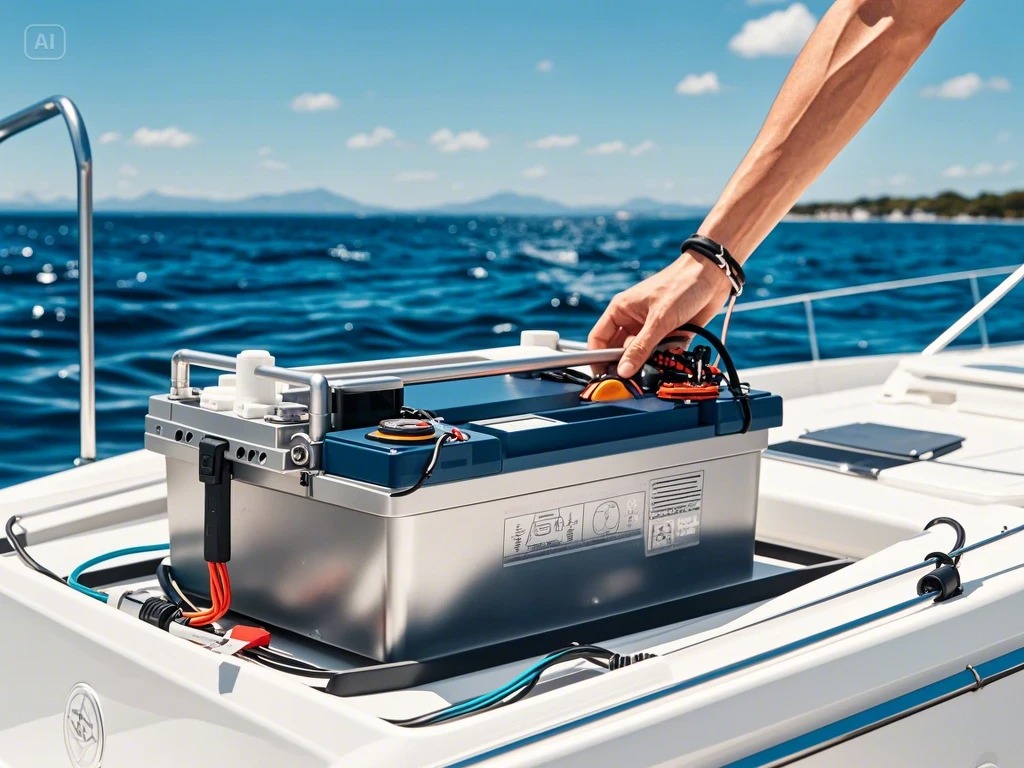
Trays vs. Battery Boxes: Making the Right Choice for Your Boat
Understanding the differences between a battery tray and a battery box is crucial for optimal battery setup.
Ventilation, Accessibility, and Weight Considerations for Trays
Open Battery Trays offer superior ventilation and easier access to battery terminals (which can otherwise be battery terminals difficult to reach in a box). They are typically lighter, making them ideal where weight is a concern, such as in a flats boat. The open design ensures your batteries, whether traditional batteries or Ionic batteries, get proper airflow.
Full Enclosure and Spill Protection with Battery Boxes
A battery box provides a full enclosure, offering maximum spill protection from battery acid and some protection from the elements. This is especially important if your battery setup is in an exposed area where splashes or direct sunlight are a concern.
When to Use Each: Exposed vs. Ventilated Areas
A sturdy battery tray is lighter and easier to install, making Battery Trays for Boats ideal for ventilated spaces within a dedicated battery compartment. Boxes, on the other hand, suit exposed areas or situations where maximum spill containment is non-negotiable.
For engine tips, visit Outboard Motor Repair: Your Nautical Overhaul Roadmap.
Top Battery Tray Recommendations & Brands
Finding the right Marine Battery Tray is easier with these top recommendations.
- AMPD Marine Holders: Custom-fit for bass boats, their Battery Compartment Trays offer extra storage in unused areas.
- T-H Marine Optima Mount: Reliable options often featuring easy-to-use straps.
- Ionic Lithium Supports: Ideal for high-performance Ionic lithium batteries (LithiumHub, providing Hub battery trays for a powerful battery like the 320Ah battery). They offer exclusive deals and expert battery advice.
- Dakota Lithium Batteries: Offers a durable Marine Battery Tray suitable for their Dakota Lithium Batteries and other Deep Cycle applications.
- Proguide Batteries: Known for their “HEAVYWEIGHT” tray, which can provide a counterbalance for your boat.
- BBT Battery Trays: High-quality options, particularly for trolling motor batteries.
Maintaining Your Battery Tray: Extending its Lifespan and Your Battery’s Health
Regular inspection and cleaning are key to keeping your battery tray and battery setup in top condition.
Regular Inspection for Loose Screws, Wear, and Corrosion
Periodically inspect your battery tray for loose screws or any signs of wear. Check the battery strap for fraying and the tray material for corrosion, especially on aluminum boat applications. Ensure all screw holes are tight.
Cleaning and Protecting Different Tray Materials
Clean plastic holders regularly to avoid material breakdown from UV exposure or grime. Keep aluminum battery trays rust-free. This routine care protects your battery setup and prolongs the life of your battery bodyguards.
Ensuring Proper Weight Distribution for Stability
For multi-battery setups or heavier marine batteries, ensure the distribution of weight worked for stability. An unbalanced load can stress the tray and affect boat handling. This is particularly important for trolling motor batteries that might be placed in the rear of boat.
Boat Maintenance Prices: How Much Does It Cost in 2024?
Troubleshooting Common Battery Tray Issues
Even with the best setup, issues can arise. Here’s how to address them.
Addressing Loose Fits and Shifting Batteries
If your single battery or battery packs are shifting, first check and adjust the battery strap. If the tray itself is loose, tighten any loose screws or consider re-mounting with stronger fasteners like sheet metal screws or stainless screws.
Dealing with Corrosion and Material Degradation
For plastic trays showing signs of cracking or degradation, consider replacing them with a more durable aluminum battery tray or a battery shelf for better longevity. For metal trays, address corrosion promptly with appropriate marine-grade treatments. Avoid cheap plastic battery trays that break down quickly.
Optimizing for Heavy Batteries and Specific Boat Types
If you find your current battery tray struggling with a powerful battery like a 320Ah battery or a new Deep Cycle unit, consider upgrading to an HD BATTERY TRAY designed for heavier loads. For tin boats or smaller craft, ensure the tray doesn’t add unnecessary weight, while for larger vessels in commercial applications, robust solutions are paramount. Even Lawn mower batteries or the ultimate all-purpose battery require a stable base if used in a marine environment.
Conclusion: Secure Your Boat’s Power for Confident Adventures
A dependable mount keeps your boat’s power safe and reliable. From single battery holders to custom aluminum battery trays and those designed for Ionic lithium batteries, the right battery tray boosts performance and longevity for all your marine batteries. For expert battery advice and professional installation, connect with pros at YachtService.vip. Ensuring a secure mount for your battery cells allows you to enjoy lots of power and peace of mind on every voyage.For expert help, connect with pros at YachtService.vip.

